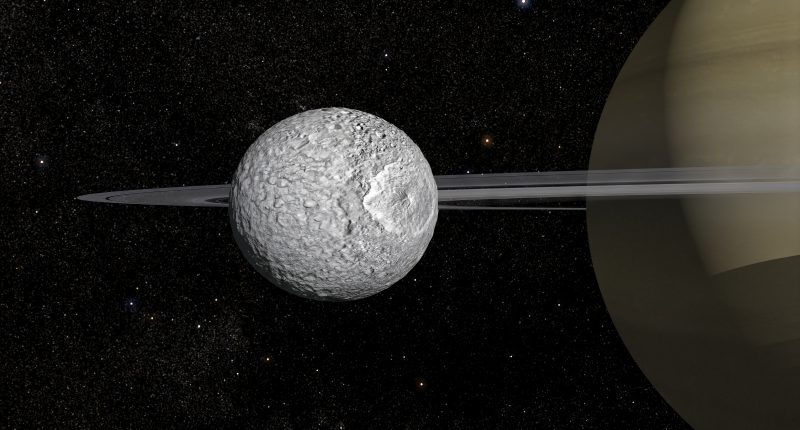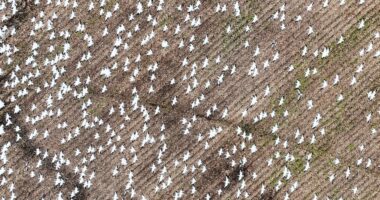ASTRONOMERS have uncovered that one of Saturn’s smallest moons may harbor a liquid ocean.
Dubbed Mimas, the Saturnian moon features a heavily cratered surface resembling Star Wars’s Death Star.
More notable than its look, however, is that it might possess an ocean beneath its thick icy shell.
The presence of liquid water could make Mimas one of the most potentially habitable places in our solar system.
“The major finding here is the discovery of habitability conditions on a solar system object which we would never, never expect to have liquid water,” Valery Lainey, discovery team member and a scientist at the Observatoire de Paris, told Space.com.
Researchers say the ocean could be located around 12 to 19 miles below the ice and could host microbial life.
The team behind the discovery also believes the ocean could be quite young, between 2 million and 25 million years.
Mima’s liquid ocean could also consist of at least half of the moon’s volume.
If the ocean is confirmed, this could change how astronomers search for alien life.
“Mimas is a small object that looks extremely cold, with no geologic activity, and you would never expect any geophysical activity inside like heating, or contact between water and with silicates in its rocky core,” Lainey said.
Most read in News Tech
“Finding this happening is really astonishing,” Lainey added.
Researchers are basing their theories on data gathered by NASA’s Cassini spacecraft, which was launched in 1997 into Saturn’s system.
Specifically, they looked at the rotational motion of Mimas using the Cassini Imaging Science Subsystem (ISS).
“It measured libration amplitude of −50.3 ± 1.0 arcmin was found for the Mimas orbital frequency.” the study reads.
“It was deduced that Mimas should harbor either a highly elongated silicate core or a global ocean,” it continued.
The researchers also explained why Cassini has not directly spotted the ocean.
“It’s really surprising we haven’t seen anything, but the thickness of the icy shell of Mimas is enough to maintain this ocean without any significant activity betraying it for millions of years,” Lainey continued.
“That’s why Cassini did not find anything at the surface of Mimas.”
Lainey hopes that future missions will eventually land a spacecraft on the surface of Mimas.
“I’m pretty sure any space mission to Enceladus will also visit Mimas as they are extremely close, and they are extremely similar ocean systems but at different times in their evolution,” he explained.
READ MORE SUN STORIES
Enceladus is another of Saturn’s moons that was confirmed to harbor a liquid ocean, per NASA.
The team’s research was published on Wednesday, February 7 in the journal Nature.










